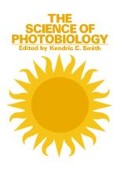Abstract
A fascination with how vision works is natural. Light provides humans and other animals with very detailed information about their surroundings through the visual sense. Humans are especially visually oriented. There is great practical importance in understanding the eye and its mechanism, so that dysfunctions of this central sensory organ can be avoided or treated more effectively.
Access this chapter
Tax calculation will be finalised at checkout
Purchases are for personal use only
Preview
Unable to display preview. Download preview PDF.
References
R. A. Eakin, Structure of invertebrate photoreceptors, Handbook Sensory Physiol. 7(1), 625–684 (1972).
M. L. Applebury, D. M. Zuckerman, A. A. Lamola, and T. M. Jovin, Rhodopsin purification and recombination with phospholipids assayed by the Metarhodopsin I ; Metarhodopsin II transition, Biochemistry 13, 3448–3458 (1974).
W. A. Hagins and S. Yoshikami, A role for Ca2+ in excitation of retinal rods and cones, Exp. Eye Res. 18, 299–305 (1974).
T. G. Ebrey and B. Honig, Molecular aspects of photoreceptor function, Q. Rev. Biophys. 8, 129–184 (1975).
T. J. Ostwald and J. Heller, Properties of magnesium-or calcium-dependent adenosine triphosphatase from frog rod photoreceptor outer segment disks and its inhibition by illumination, Biochemistry 11, 4679–4686 (1972).
D. Bownds, A. Brodie, W. E. Robinson, D. Palmer, D. J. Miller, and A. Shedlovsky, Physiology and enzymology of frog photoreceptor membranes, Exp. Eye Res. 18, 253–269 (1974).
H. Kühn, Light-dependent phosphorylation of rhodopsin in living frogs, Nature 250, 588–590 (1973).
R. G. Pannbacker, Control of guanylate cyclase activity in the rod outer segment, Science 182, 1138–1140 (1973).
R. G. Pannbacker, D. E. Fleischman, and D. W. Reed. Cyclic nucleotide phosphodiesterase: High activity in mammalian photoreceptor, Science 175, 757–758 (1972).
N. Miki, J. J. Keirns, F. R. Marcus, J. Freeman, and M. W. Bitensky, Regulation of cyclic nucleotide concentration in photoreceptors: An ATP-dependent stimulation of cyclic nucleotide phosphodiesterase by light, Proc. Natl. Acad. Sci. USA 70, 3820–3824 (1973).
C. Goridis, N. Virmaux, H. L. Cailla, and M. A. Lelaage, Rapid, light-induced changes of retinal cyclic GMP levels, FEBS Lett. 49, 167–169 (1974).
R. Rodieck, The Vertebrate Retina ,Freeman, San Francisco, (Calif.) (1973).
T. Cornsweet, Visual Perception ,Academic Press, New York (1970).
W. K. Noell, U. S. Walker, B. S. Kang, and S. Berman, Retinal damage by light in rats, Invest. Ophthalmol. 5, 450–472 (1966).
T. Kuwabara and R. A. Gorn, Retinal damage by visible light, Arch. Ophthalmol. 79, 69–78 (1968).
K. V. Anderson, F. P. Coyle, and W. K. O’Steen, Retinal degeneration produced by low intensity colored light, Exp. Neurol. 35, 233–238 (1972).
T. Lawwill, Effects of prolonged exposure of rabbit retina to low-intensity light, Invest Ophthalmol. 12, 45–51 (1973)
J. Marshall, J. Mellerio, and D. A. Palmer, Damage to pigeon retina by moderate illumination from fluorescent lamps, Exp. Eye Res. 14, 164–169 (1972).
C. C. Farnsworth and E. A. Dratz, Oxidative damage of the rod outer segment (ROS) disk membrane and the role of vitamin E, Biochim. Biophys. Acta 443, 556–570 (1976).
V. E. Kagan, A. A. Shvedova, K. N. Novikov, and Yu. P. Kozlov, Light induced free radical oxidation of membrane lipids in photoreceptors of frog retinas, Biochim. Biophys. Acta 330, 76–79 (1973).
Author information
Authors and Affiliations
Editor information
Editors and Affiliations
Rights and permissions
Copyright information
© 1977 Plenum Press, New York
About this chapter
Cite this chapter
Dratz, E.A. (1977). Vision. In: Smith, K.C. (eds) The Science of Photobiology. Springer, Boston, MA. https://doi.org/10.1007/978-1-4684-1713-5_10
Download citation
DOI: https://doi.org/10.1007/978-1-4684-1713-5_10
Publisher Name: Springer, Boston, MA
Print ISBN: 978-1-4684-1715-9
Online ISBN: 978-1-4684-1713-5
eBook Packages: Springer Book Archive

